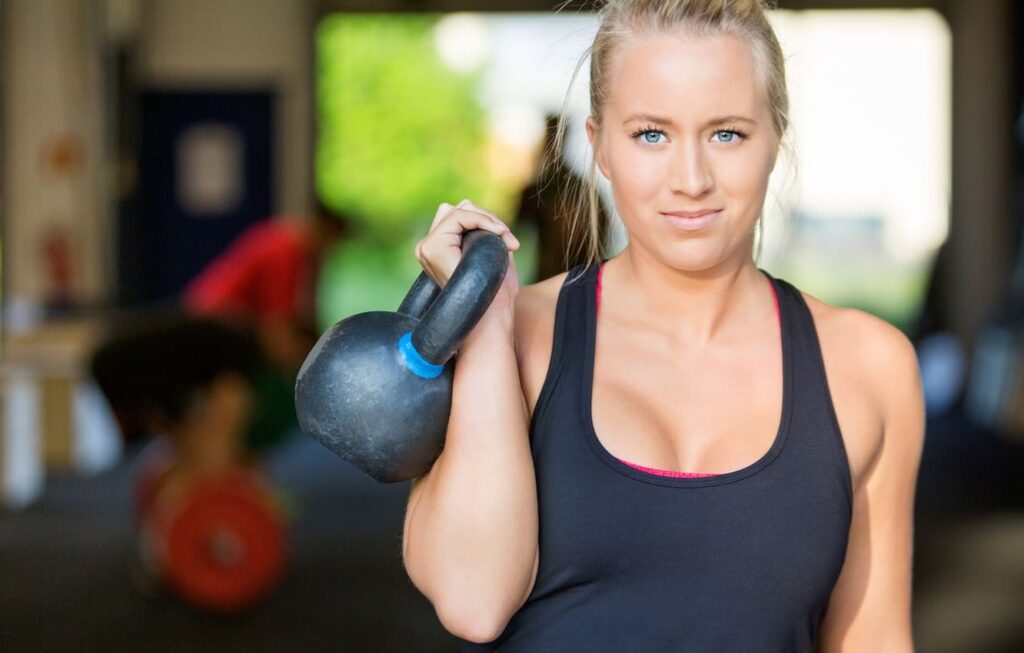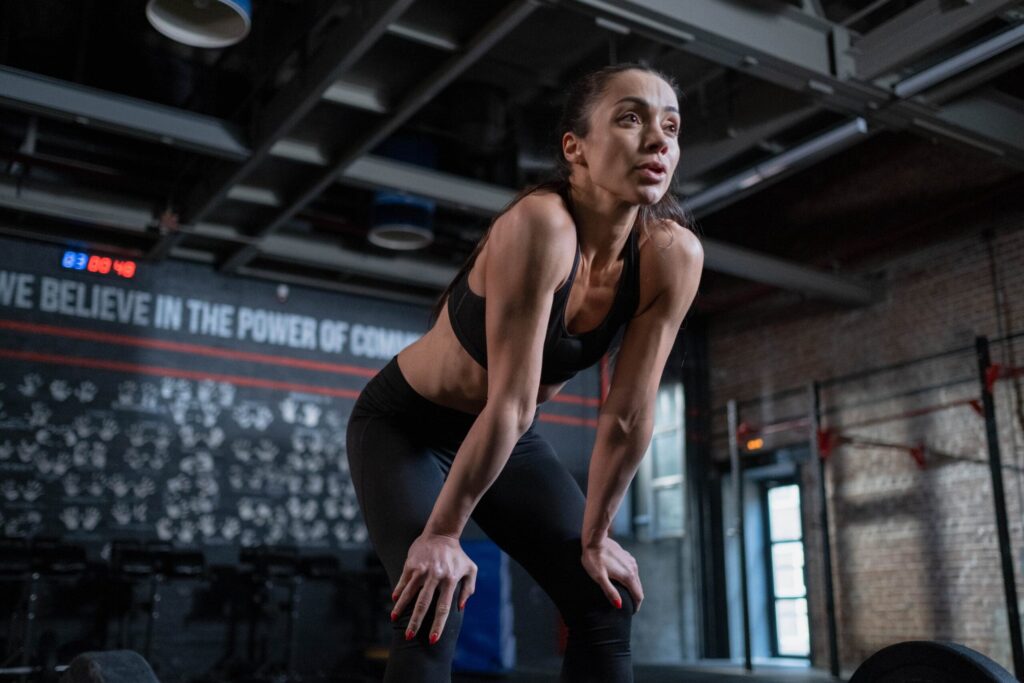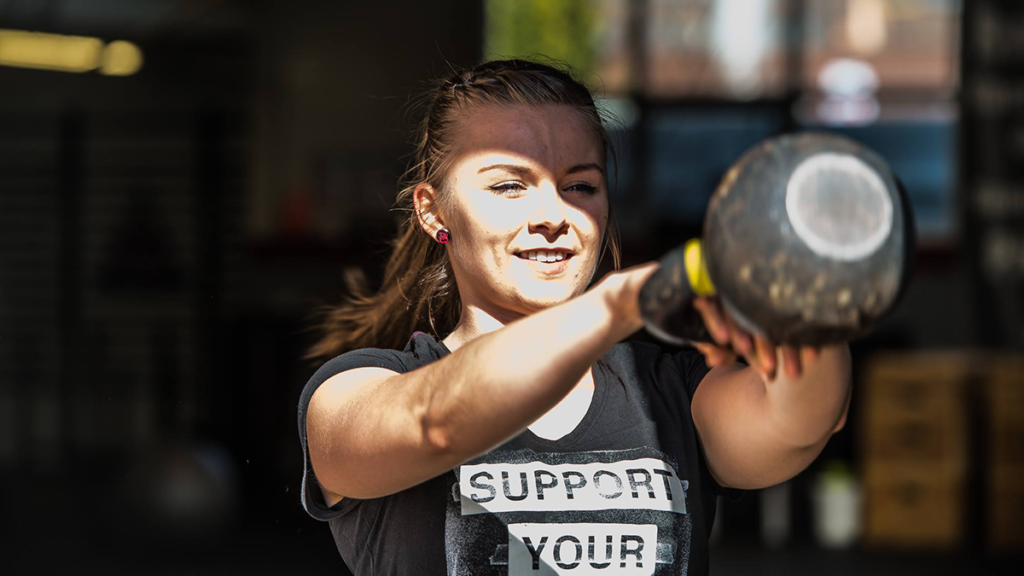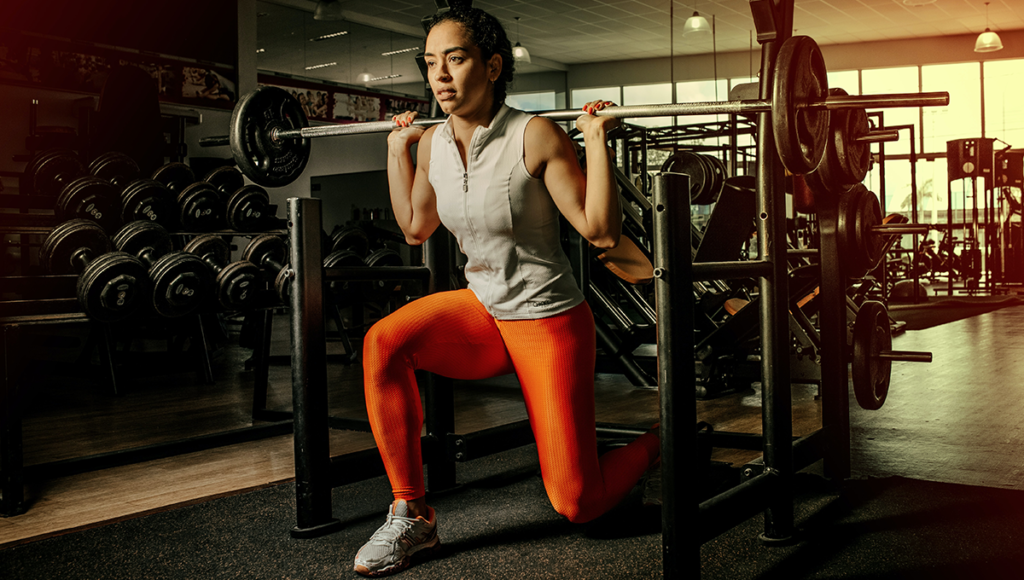Weirdly titled the “thunctional three.”
Check out the only 3 exercises you need for total body functional strength.
Functional strength refers to the physical capacity to perform everyday movements and tasks with efficiency, stability, and control. It’s about developing strength that translates directly to real-world activities, rather than focusing solely on isolated muscles or lifting heavy weights.
Functional strength training emphasizes movements that mimic or directly improve the way the body functions in daily life, such as bending, twisting, pushing, pulling, and carrying. By enhancing functional strength, individuals can better handle the demands of daily activities, sports, and unexpected challenges, leading to improved overall movement quality and reduced risk of injury.
Functional strength prioritizes movements that are dynamic, multi-joint, and engage the core for stability. This approach not only builds strength but also fosters improved coordination, balance, and joint mobility, contributing to a well-rounded and adaptable physical foundation. And the person who came up with this list of the only 3 exercises you need for total body functional strength is no other than Adam Sinicki.
Adam Sinicki is known online as “The Bioneer.” He is a health and fitness writer, a personal trainer and has gathered almost half a million subscribers on his YouTube Channel.
 Source: Courtesy of CrossFit Inc.
Source: Courtesy of CrossFit Inc.
See it all below.
The Only 3 Exercises You Need for Total Body Functional Strength
In a video, Adam Sinicki contemplates the idea of narrowing down his favourite exercises to a minimal set that would still offer a comprehensive workout. He discusses the concept of the “thunctional three” – a set of three exercises he believes could provide a well-rounded full-body workout. He emphasizes the need to train various aspects of performance, such as mobility and rotation.
Adam introduces the first exercise as the “lizard crawl,” explaining its benefits in terms of strength training, mobility, and dynamic movement. He provides detailed instructions on how to perform the exercise correctly in a video at the end of this article, but here is a quick overview.
To perform the lizard crawl, follow these steps:
Starting Position: Begin in a quadruped position on the floor. This means your hands are placed under your shoulders, and your knees are under your hips. Your back should be parallel to the ground. Contralateral Movement: Reach your right arm forward as you simultaneously extend your left leg straight back behind you. This is the contralateral movement that characterizes the lizard crawl. Push and Crawl: As you reach forward with your right arm and extend your left leg back, begin to push your body up off the ground. This movement is similar to a one-arm push-up. This combination of reaching and pushing propels your body forward. Alternate Sides: After pushing off, repeat the movement with the opposite side. Reach your left arm forward while extending your right leg back. Again, push off the ground to move your body forward. Maintain Core Stability: Throughout the crawl, keep your core engaged and your body parallel to the ground. Avoid letting your hips sag or twist as you move. Controlled Movement: Perform the crawl in a controlled and deliberate manner. Try to maintain a smooth rhythm and fluid motion as you alternate sides. Dynamic Aspect: The lizard crawl involves a dynamic component, so embrace the slight changes in movement with each step. This helps improve coordination, agility, and overall body control. Continuous Motion: Repeat the contralateral crawling pattern, moving forward or covering a designated distance. To challenge yourself further, you can crawl uphill and downhill or change directions.Remember that the lizard crawl is a complex movement that engages multiple muscle groups and requires coordination. It’s beneficial for improving upper body strength, core stability, shoulder mobility, and hip mobility. As with any exercise, it’s important to start at a comfortable level and gradually increase the intensity as you become more familiar with the movement.
Next, Sinicki introduces the “crossbody clean and press” as the second exercise. He explains the movement pattern, highlighting its combination of hip hinge and squat, along with the vertical pressing motion for building shoulder strength. This movement is done with a kettlebell.
“You’re going to put that [kettlebell] down on the floor in front of one leg then you’re going to squat and hinge down, reach across with the opposite arm, bring it up into the rack position and then press it overhead. Note that this isn’t a clean and jerk this is a clean and press,” Sinicki explains.

How To Take the Fitness Age Challenge and Find Out How Old You Really Are
The third exercise, the “bodyweight row,” is introduced as a horizontal pulling movement. Adam discusses its benefits for posture improvement, shoulder stability, and rear delt engagement. He also mentions an advanced variation – the “arched back pull up.”
To perform the bodyweight row, follow these steps:
Setup: Find a sturdy horizontal bar, such as a Smith machine bar or a TRX suspension trainer. The bar should be at waist height or slightly higher. If using a TRX, adjust the straps so that the handles are at waist level. Grasp the Bar: Stand facing the bar and reach out to grasp it with an overhand grip (palms facing away from you). Your hands should be slightly wider than shoulder-width apart. Position Yourself: Walk your feet forward while leaning back, so your body is at an angle to the ground. Your heels should be on the floor and your body should form a straight line from your head to your heels. The further you walk your feet forward, the more challenging the exercise becomes. Rowing Movement: Pull your chest up toward the bar by bending your elbows and squeezing your shoulder blades together. Focus on using your back muscles to initiate the movement. Your body should move in a straight line. Peak Contraction: At the top of the movement, your chest should be close to the bar and your elbows should be bent at about a 90-degree angle. Lowering Phase: Slowly lower your body back down to the starting position while maintaining control. Fully extend your arms but keep a slight bend in your elbows to keep tension on the muscles. Repetition: Perform the desired number of repetitions. Aim for a controlled and smooth motion throughout the exercise.And that is Sinicki’s only 3 moves you need for total body functional strength. To understand fully why he picked these exercises, watch his full video below.
The Only 5 Exercises You Need to Look Super Jacked
5 Methods of Progressive Overload to Force Muscle Growth
5 Testosterone-Boosting Foods Men Must Eat
How Often Should You Train?
For building functional strength, it’s generally recommended to aim for a workout routine that includes strength training exercises 2 to 3 times per week. This frequency allows for adequate recovery between sessions while still providing consistent stimulus to promote strength gains and movement improvement. Consistency is key because functional strength is not just about short-term results; it’s about building a foundation of physical capability that translates to everyday activities and overall well-being.

Consistency is crucial for several reasons. First, it helps create a progressive adaptation in the body. Regular workouts signal the body to adapt and become stronger over time. Second, consistency allows for the reinforcement of proper movement patterns. Functional strength training focuses on movements that mimic real-life activities, and consistent practice helps ingrain these patterns into your muscle memory, making them more natural and efficient. Third, maintaining a consistent routine helps prevent muscle imbalances and reduces the risk of injury by promoting balanced strength and joint stability. Lastly, functional strength is a long-term goal, and achieving lasting results requires ongoing effort and commitment, which consistency supports.
How to Build Strength and Mobility at the Same Time
12 Unique Exercises You Are Not Doing (But Should)
Best Exercises to Live Longer and Healthier














